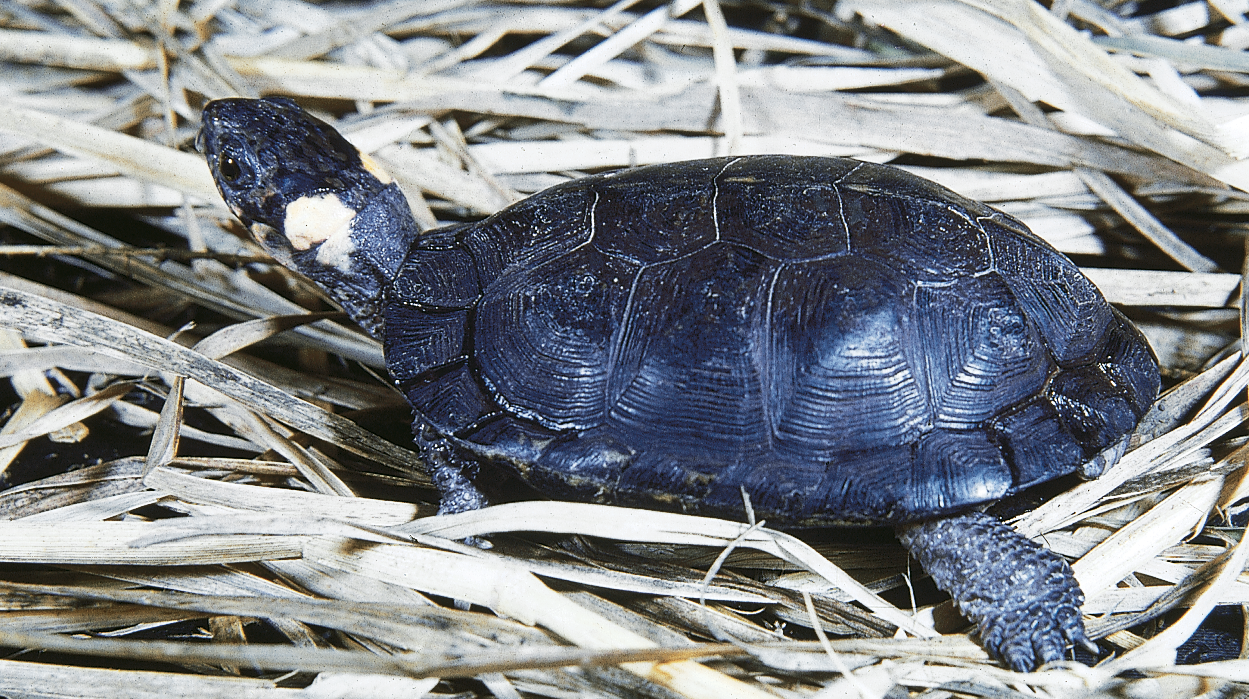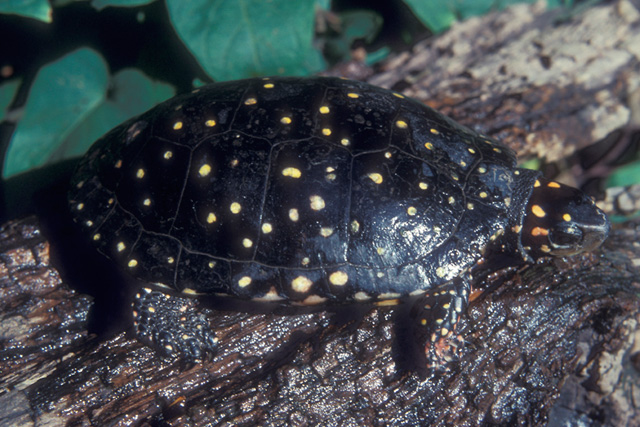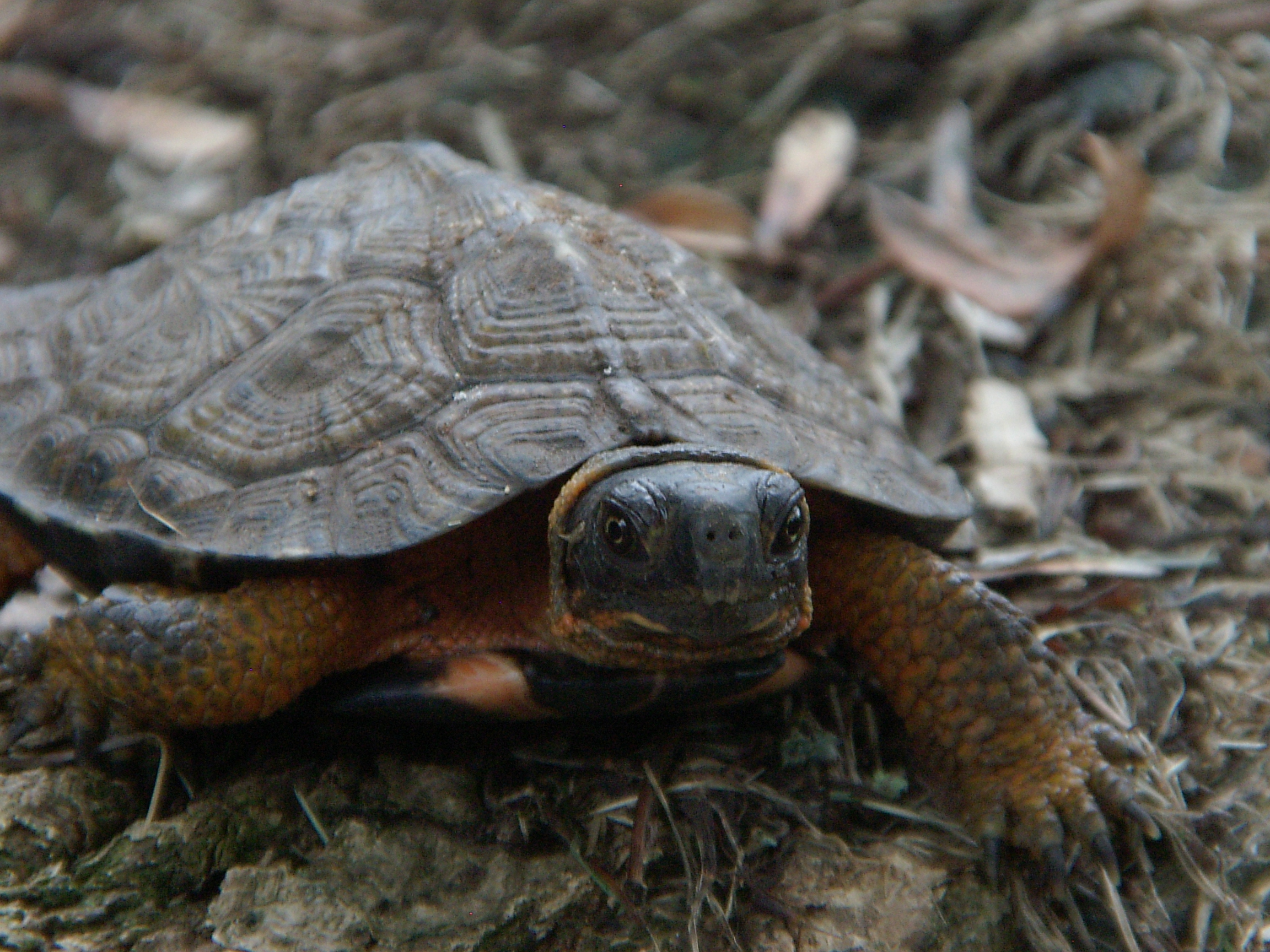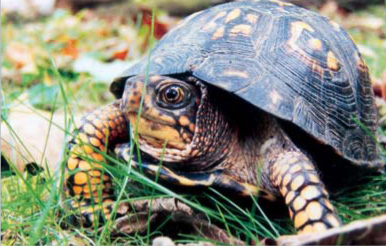TURTLE CONSERVATION
Private landowners can play a vital role in conserving turtles and their habitat. If you have turtles that are considered Species of Greatest Conservation Need and/or their habitat on your property, please contact a resource professional for technical or habitat management assistance.
BOG TURTLE
 The bog turtle, America's smallest turtle, is federally listed as Threatened under the Endangered Species Act. Bog turtles depend upon an open, sunny, spring fed wetlands with scattered dry areas, and can be an indicator of water quality and wetland function. The greatest threats to bog turtles include habitat degradation and fragmentation from land conversion, habitat succession due to invasive exotic and native plants, and illegal trade and collecting.
The bog turtle, America's smallest turtle, is federally listed as Threatened under the Endangered Species Act. Bog turtles depend upon an open, sunny, spring fed wetlands with scattered dry areas, and can be an indicator of water quality and wetland function. The greatest threats to bog turtles include habitat degradation and fragmentation from land conversion, habitat succession due to invasive exotic and native plants, and illegal trade and collecting.
Private landowners own the majority of remaining bog turtle habitat; good livestock grazing management has helped to conserve bog turtle habitat, demonstrating the important role that agriculture can play in conservation.
SPOTTED TURTLE
 The spotted turtle occurs in a wide variety of shallow and seasonal freshwater wetlands throughout eastern North America from eastern Maine to north-central Florida.
The spotted turtle occurs in a wide variety of shallow and seasonal freshwater wetlands throughout eastern North America from eastern Maine to north-central Florida.
Spotted turtles’ late maturity, small size (and limited reproductive capacity) and frequent terrestrial habitat-use leave them vulnerable to conversion of wetlands and certain intensive land uses (notably, residential development and urbanization).
WOOD TURTLE
 Wood turtles live in and around cool, clean, slow-moving streams and rivers from Virginia to southern Canada. These semiaquatic turtles overwinter and mate in streams, but spend much of the warmer months roaming the surrounding landscape. They utilize a wide range of upland habitats from fields and shrublands to mature forest.
Wood turtles live in and around cool, clean, slow-moving streams and rivers from Virginia to southern Canada. These semiaquatic turtles overwinter and mate in streams, but spend much of the warmer months roaming the surrounding landscape. They utilize a wide range of upland habitats from fields and shrublands to mature forest.
Agricultural land can be attractive and beneficial for wood turtles if properly managed. Unfortunately, agricultural machinery can also kill wood turtles and harm local populations.

The woodland box turtle in the northeast is an at-risk subspecies experiencing population declines throughout most of its range. It inhabits forests, fields, ecotones and early successional habitats, occasionally using ephemeral and shallow wetlands.
Woodland box turtles face many threats, including habitat alteration and fragmentation from development, roadway traffic and ATV use in natural areas, agricultural activities, incidental and illegal collection, habitat management activities (e.g., mowing, prescribed fires), inflated level of predation, disease, climate change and natural disturbances (e.g., floods and fires).